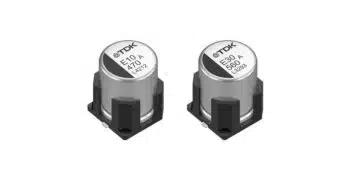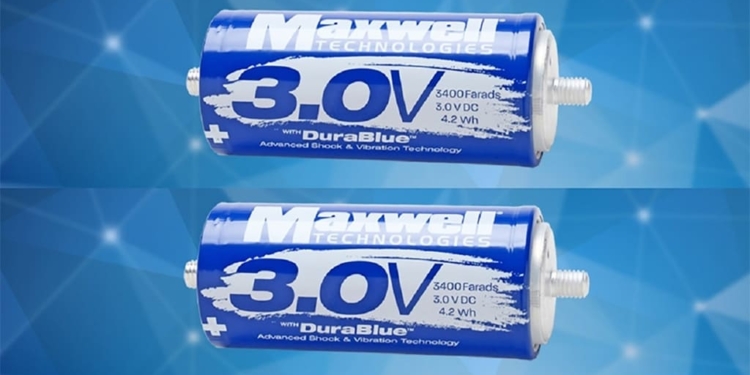Source: Maxwell Technologies news
SAN DIEGO, Jan. 9, 2019 /PRNewswire/ — Maxwell Technologies, Inc. (Nasdaq: MXWL), the leading developer and manufacturer of energy storage and power delivery solutions, today announced the launch of a new full-featured 3.0-volt (3.0V) product platform.
With the introduction of these next generation ultracapacitors, users have the ability to increase energy and power in the same form factor as the 2.7-volt product line and can significantly cost-optimize their system designs by using fewer ultracapacitor cells or modules. Alternatively, users can upgrade to a 3.0V solution to extend the expected life of their products. The 3.0V platform is designed for single-cell applications as well as multi-cell complex module systems.
“Maxwell Technologies continues to expand its product roadmap with the introduction of the highest energy cells to date,” said Thibault Kassir, Maxwell Technologies vice president and general manager, energy storage. “By continually listening to the needs of our customers, our 3.0V family of products was developed to provide the flexibility to address higher-voltage or cost-sensitive applications. We designed these innovative products with the expertise gained by the collaboration of our technology centers across the world. Maxwell ensures the highest quality and affordability, while setting the new industry standard for a 3.0V product line.”
Designed from the ground up, Maxwell’s new 3.0V platform addresses energy storage requirements driven by trends in renewable energy, industrial electrification and smart grid. The growth of renewable energy sources has increased wind turbine installations, which require more energy storage to ensure pitch control during critical moments, such as when the turbine blades must be brought to a standstill. E-commerce has sparked the need for ultracapacitors in warehouses to provide Automated Guided Vehicles (AGVs) with high power and fast charging capabilities. The demand for enhanced connectivity in smart meters for gas, water and electric utilities requires high power functionality to improve accurate meter readings and response time to customers. Whether used alone, integrated into a module assembly or in a hybrid configuration with fuel cells, Maxwell’s 3.0V platform of products can help reduce the overall cost and weight of the system while improving return on investment for customers.
3.0V XP™ Small Cell Ultracapacitors
The 3.0V platform includes small cells used in actuators, emergency lighting, telematics, automotive, backup systems, smart meter and robotic applications. The 3.0V small cells are an expansion of Maxwell’s XP brand, giving the same performance as the Gen 1 XP line but with a more user-friendly design. Maxwell’s new 3.0V solutions provide a cost-efficient, high performance and long-life platform. The 3.0V, 3-farad (3F), 5F, 10F, 25F and 50F products are sampling now, with additional small, medium and large cells coming out in the near future to further expand the 3.0V platform.
3.0V 3400-Farad (3400F) Ultracapacitor Cell with DuraBlue® Advanced Shock and Vibration Technology
The 3.0V cell is the next evolution of the 3400F family, following the 2.7V and 2.85V cells, typically used in industrial and UPS applications, as well as in the wind and heavy transportation industries. The 3.0V 3400F cell has 40% higher power than Maxwell’s 2.7V 3000F cell, in an industry-standard 60-mm cylindrical form factor, as well as a 54% increase in stored energy. The 3.0V cell design uses Maxwell’s proprietary DuraBlue® Advanced Shock and Vibration Technology to provide three times the vibrational resistance and four times the shock immunity of the prior generation ultracapacitor cells. Customers can seamlessly upgrade to the 3.0V cell from any of the current 3000F or 3400F products.






























